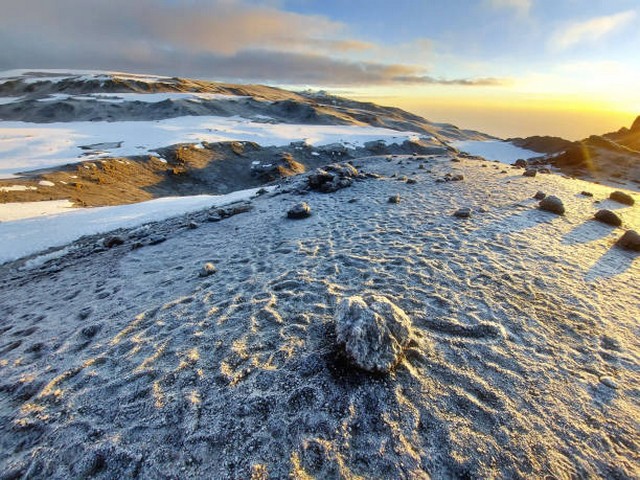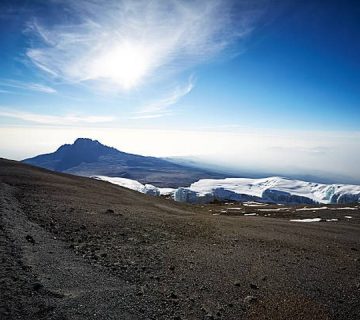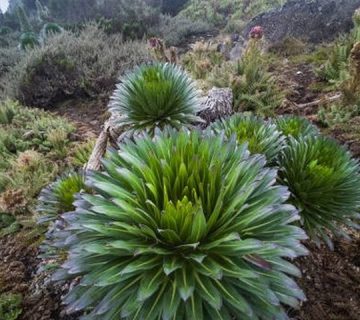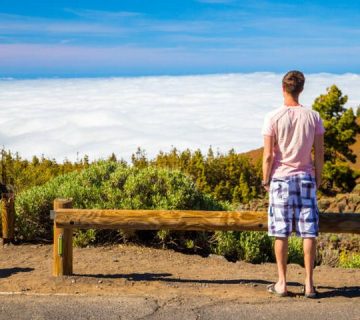Capture the Summit: Best Spots for Kilimanjaro Summit Photos
Standing tall as Africa’s highest peak, Mount Kilimanjaro beckons adventurers from all corners of the globe. Its majestic rise against the backdrop of the Tanzanian plains makes it not just a climber’s paradise but also a photographer’s dream. At the Kilimanjaro Centre for Trekking and Ecotourism (KCTE), we understand that reaching the summit is more than just a trek; it’s a journey of spirit and spectacle. And what better way to immortalize this adventure than through breathtaking photographs? In this blog post, we guide you through the best spots for Kilimanjaro summit photos, ensuring that your memories are as stunning as your experience.
Why Kilimanjaro Offers Unmatched Photographic Opportunities
Kilimanjaro is not just a mountain; it’s a mosaic of ecological systems. From lush rainforests to alpine deserts, each altitude presents its unique scenery. As you ascend, the changing landscapes offer a plethora of compositions for photographers. The summit, Uhuru Peak, sits at 5,895 meters (19,341 feet) above sea level, where the curvature of the earth is visible and the skies touch the edges of the horizon in a spectacular panorama.
1. First Light at Stella Point
The Golden Hour Unveiled
Stella Point, an intermediate summit stop on the crater rim, is one of the most strategic spots for capturing the sunrise. At approximately 5,756 meters, it offers a front-row seat to the horizon’s blush as the sun peeks over the vast African plains. The golden hour here bathes the snowy summit in a warm glow, creating a perfect canvas for silhouette photography.
Tips for Capturing the Sunrise
- Prepare for the Cold: Early morning temperatures can be biting. Ensure your gear is accessible and your camera batteries are kept warm.
- Use a Tripod: For long exposure shots capturing the sun’s ascent, stability is key.
- Settings Matter: Increase ISO settings slightly to compensate for the low light without compromising on the grain.
2. The Summit Sign at Uhuru Peak: Iconic Shots Await
The Crowning Moment
The iconic wooden sign at Uhuru Peak is perhaps the most sought-after photo spot on Kilimanjaro. Standing proudly with the sign that marks Africa’s highest point is a rite of passage for many climbers. The backdrop offers a surreal landscape of glaciers and clouds mingling below.
Techniques for the Perfect Summit Photo
- Timing Is Everything: Be patient. Wait for a break in the crowd for a clear, unobstructed shot.
- Focus on Angles: Experiment with different angles. A low-angle shot can capture both the sign and the vast sky above, emphasizing the grandeur.
3. The Crater Rim: A Panoramic Paradise
Beyond the Peak
While the summit might get all the glory, the surrounding crater rim offers equally stunning photographic opportunities. The vast caldera, ash pit, and remnants of volcanic activity present a rugged, other-worldly beauty that is stark against the snowy caps.
Capturing the Crater’s Essence
- Panoramic Shots: Use a wide lens to capture the expansive views. Panoramas here are breathtaking.
- Include Natural Elements: Incorporate foreground elements like rock formations or ice fields to add depth to your compositions.
4. The Rebmann Glacier: A Touch of Ice
Eternal Ice at the Equator
Located just off the main summit path, the Rebmann Glacier is a spectacular sight. This massive body of ice, defying the equatorial climate, makes for mesmerizing photographs, especially when the light plays off its crystalline surfaces.
Glacier Photography Tips
- Use Polarizing Filters: These can help reduce glare from the ice and enhance the blue tones.
- Early Morning Light: Capture the glacier in the early morning for softer light and fewer shadows.
Connecting with Nature and Culture
Remember, while the summit offers phenomenal vistas, the journey through different climatic zones and interactions with local guides and porters provides a fuller picture of Kilimanjaro’s spirit. Capturing these moments provides a narrative to your adventure, showcasing not only the climax at Uhuru Peak but also the rich tapestry of experiences leading up to it.
Summary and Call-to-Action
Mount Kilimanjaro is more than just a climb; it is an expedition through diverse ecosystems and a quest crowned with breathtaking landscapes perfect for any photographer. Whether you’re capturing the first light from Stella Point, framing the perfect shot at the summit sign, exploring the vast crater rim, or photographing the ancient glaciers, Kilimanjaro offers a multitude of stunning backdrops.
Ready to embark on this picturesque adventure? Book your Kilimanjaro climb with the Kilimanjaro Centre for Trekking and Ecotourism (KCTE), and let us guide you to not only reaching the summit but capturing the soul of your journey through the lens. Visit our website or contact us today to plan your photographic expedition to the roof of Africa.
Frequently Asked Questions
Q1: What is the best time of year to climb Kilimanjaro for photography?
A1: The best times are during the dry seasons, from late June to October or from late December to early March, when the skies are clearest.
Q2: What type of camera equipment is recommended for the climb?
A2: A DSLR or mirrorless camera with a versatile zoom lens is ideal. Don’t forget spare batteries and protective gear for cold and wet weather.
Q3: Are there any photography tours specifically aimed at capturing the best of Kilimanjaro?
A3: Yes, at KCTE, we offer specialized photography tours led by experienced guides who are also skilled photographers, ensuring you get to the best spots at the right times.
Capture not just the summit, but the soul of Kilimanjaro. Join us on this journey of a lifetime!




